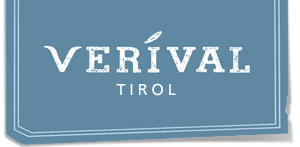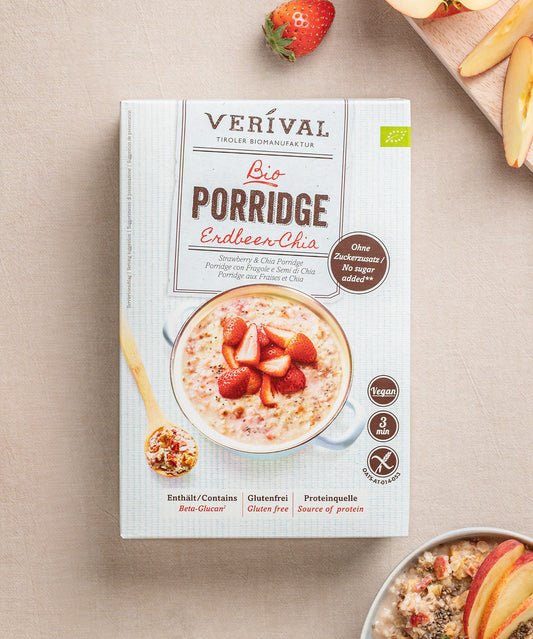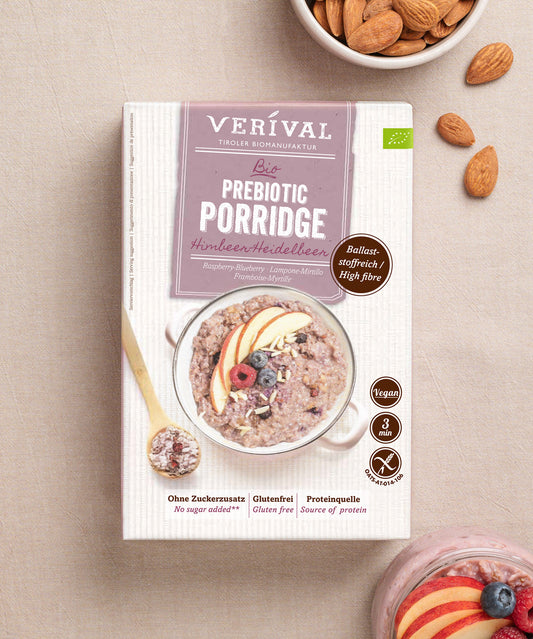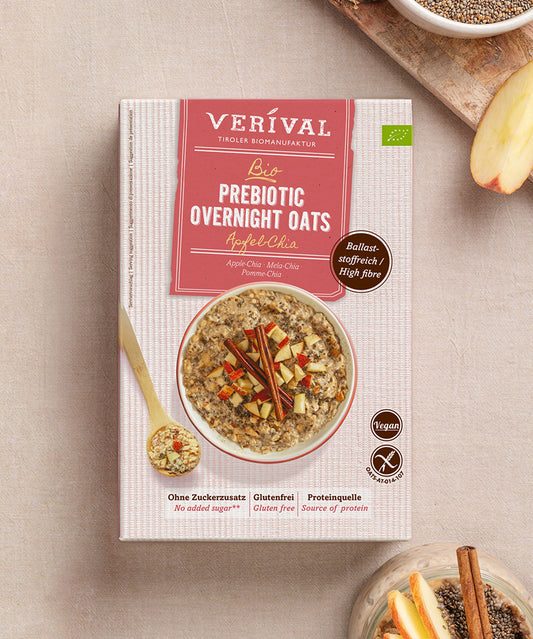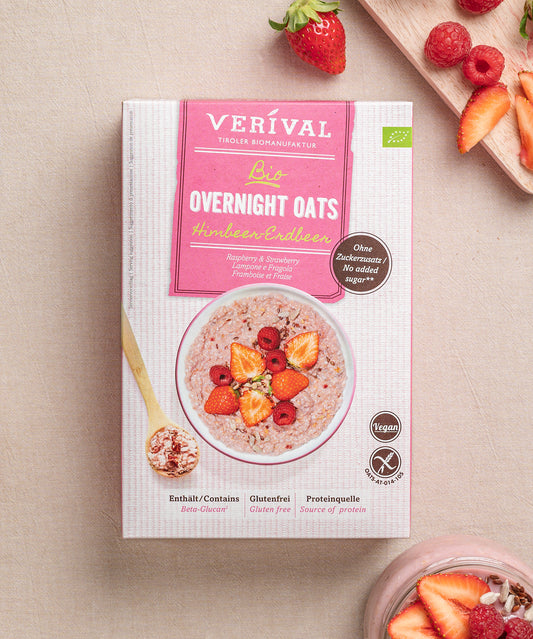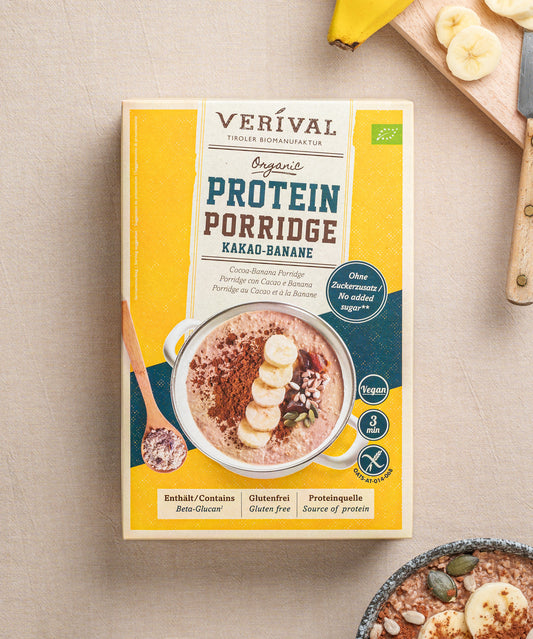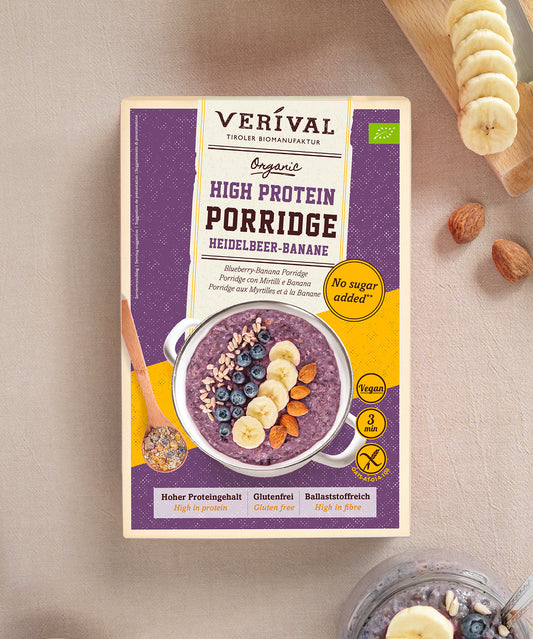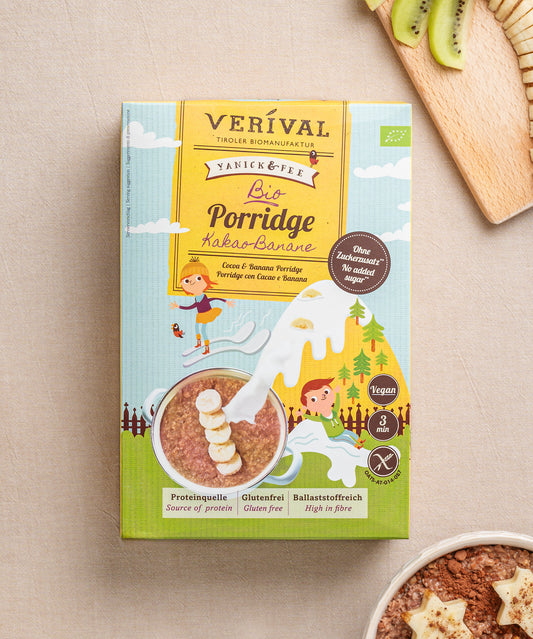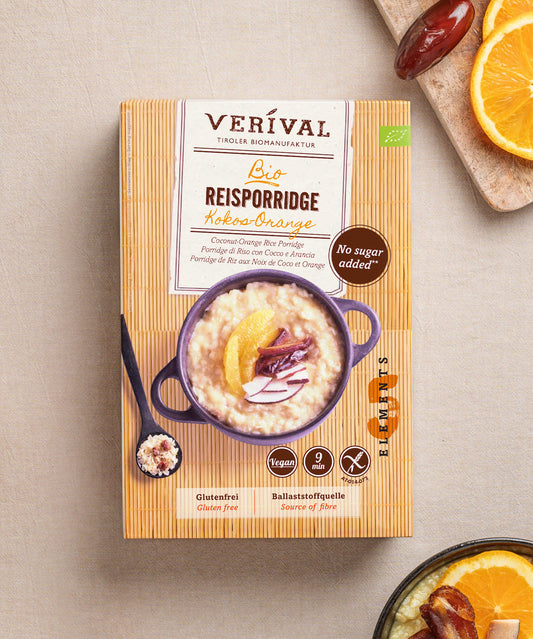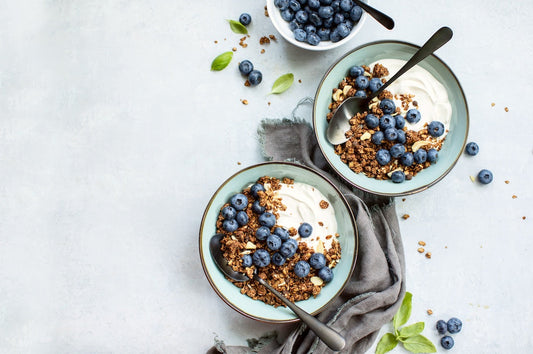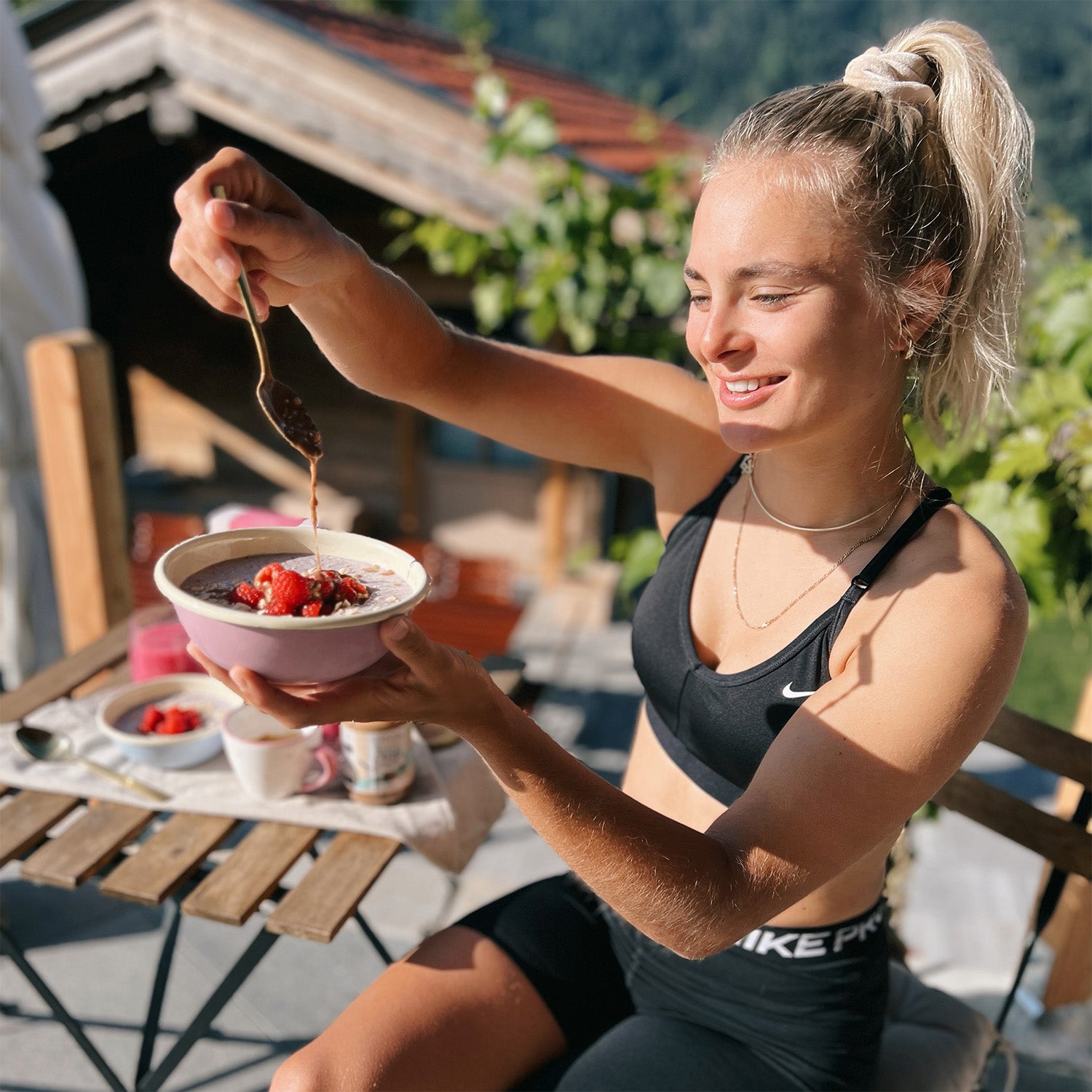Creating your own training plan may sound absurd at first, but anyone can actually do it with a few tips and tricks. We will explain to you in 5 steps how to create your own individual training plan to achieve your training goals. We will also show you what the perfect sports breakfast looks like, which will help you reach your goals even faster and more effectively. Whether you are looking for training plans for muscle building or fat loss, we have the most important tips for you.
The perfect breakfast for your daily sporting routine – discover it now
These 5 steps should be considered for your training plan
Writing your own training plan can seem overwhelming. For most amateur athletes, it is enough to follow the most important tips and tricks. A professionally created training plan is only recommended for competitive athletes or people with physical limitations.
Let's take a closer look at what to look out for in your first training plan and which pitfalls to avoid.
1. Don't just blindly rely on advertised training plans on the internet.
There are now plenty of training plans from online coaches, most of which promise individuality. However, only very few of them are really useful. Some of them are now free and at least don't cause any financial damage.
However, the situation is different for other training plans, which are often advertised on social media. There it may well happen that your training plan costs you a few dozen euros. However, a ready-made training plan is neither necessary nor recommended for most people.
Because only a few of the training plans are really individually tailored to your body. After all, these plans are a mass-produced product and not personally tailored to you.
Instead, it makes sense to create your own training plan. This way, you can take your daily routine and your specific needs into account and create the perfect plan for you and your body.
2. Determine your current performance level
But where should you start? First of all, it makes sense to determine your current performance level. It's best to look at how much and what kind of exercise you've done in the recent past.
For example, if you are already used to running 10 to 15 kilometers a week, you can use this information for your training plan. Ask yourself the following questions to get the most important information for your training plan:
- How long have you been doing the sport?
- How much time do you invest in your training each week?
- What weight or distances do you currently cover?
- How exhausting do you find your training to be so far?
3. Set yourself clear goals for your training plan
Now, the most important thing for creating your training plan is to decide what your goals are. Do you want to improve your health, get fitter or lose weight?
Before you start writing your plan, you should answer this question for yourself.
For losing weight, a combination of strength and endurance training is recommended. During endurance training, you burn a lot of calories and improve your cardiovascular system. Strength training, on the other hand, increases your basal metabolic rate and thus your calorie requirement due to the increase in muscle mass. In order to lose weight without cravings in the long term, you should now supplement your training with a suitable diet – but more about that later!
On the other hand, if you want to become more powerful and dynamic in your movements, you could focus on speed training. Improved speed can help you in numerous sports such as tennis or football, for example.
4. Find suitable methods and exercises for your training
Based on your training goals, you can now start selecting suitable training methods and exercises for them.
Basically, it depends on which abilities you want to improve. The following table provides a small overview of suggestions for improving conditional abilities:
| Perseverance | Power | Speed |
| Cycling | Muscle building training | Sprints |
| Running, Nordic walking, hiking | Maximum Strength Training | Jumps |
| Swimming | Stabilisation training | Rolls |
How to improve your endurance
To improve your endurance, you can do a variety of sports. In summer, these could include cycling, hiking, running and more. In winter, you could try Nordic walking or cross-country skiing.
You can either opt for continuous exercise, i.e. sporting activities that you do with less effort over a longer period of time, such as a leisurely jog of about 5 kilometers or a one-hour walk in the forest.
The most important sources of protein for endurance sports – find out more
Or you can opt for interval training. This involves performing the sporting activity at a higher intensity, but giving your body targeted breaks to recover in between . When swimming, for example, you could swim two lengths, then take a 30-second break, and then repeat this a few more times.
Both methods can strengthen your cardiovascular system, with the slightly more comfortable continuous efforts also being particularly beneficial for your immune system.
Muscle building – get stronger with these tips for your training plan
If you want to build muscle mass and get stronger, endurance training can help you as a beginner. However, your training plan will only be truly effective if you combine it with strength training and an ideal muscle-building diet.
To start with, it may be enough to do exercises with your own body weight. Squats, planks or even push-ups are good for this. Planks in particular allow you to do a good stabilization workout by alternately stretching out an arm or leg while trying to keep your core stable.
If you are a little more advanced and want to get in shape for the summer, muscle-building workouts are the way to go. You'll be working with weights that allow you to do about 6 to 12 repetitions.
Three to five sets per exercise are recommended. Suitable exercises include bench presses, squats, deadlifts or exercises on machines in the gym. Depending on your goals, the training session should last between 40 minutes and 1.5 hours.
However, if you already have a lot of experience with strength training, you can take it to the next level and do maximum strength training. When doing so, you should choose a weight for your exercises that allows you to do just two to five repetitions. It's best to give your body a little more of a break between sets – because the high intensity puts a lot of stress on your central nervous system!
The most important training principles for your training plan
To get the most out of your self-made training plan, you should follow the most important training principles.
On the one hand, there is the principle of “progressive load increase”. The aim here is to increase the athletic load a little with every other training session. This could be more kilometers when running or more weight when strength training. However, make sure not to increase your load by more than 10 percent. Otherwise, you run the risk of suffering injuries.
Speaking of injuries: to avoid overwhelming your body, you should purposefully incorporate phases in which you noticeably reduce your training load. In practice, it is common to take a week off after three weeks of training to let your body rest. You don't have to give up exercise completely – instead, you could simply take a little less weight or cut out a few kilometers when running.
Of course, there are a number of other training principles that can make your training plan even more professional. However, that would go into a little too much detail.
5. Stay motivated with a training diary
Last but not least, it is important that you motivate yourself sufficiently. This can be easily achieved with a training diary in which you note down your training and thus get an overview of your progress.
The right nutrition for your training plan
However, just as important as training is a suitable diet for your training success. Depending on your training goal, you should take different measures.
Basically, if you want to lose weight healthily, you should consume fewer calories than you burn throughout the day.
This is how you quickly and easily calculate your calorie requirement – learn more
If, on the other hand, you want to improve your performance for a competition or build muscle in a targeted way, you should at least meet your calorie needs – but in some cases it even makes sense to add 200 to 400 calories to your needs to optimize your training success.
The best breakfast ideas for your training success
Breakfast is known to be the most important meal of the day. This applies twice as much to those who are active in sports. Because it is best to train when your energy stores are well filled.
Complex carbohydrates are particularly suitable for this. You can find these in oat-based porridge, whole grains or pseudo-grains such as quinoa or buckwheat.
Healthy snacks for in between during sports
If you do a lot of sports, you may get hungry between meals. To keep you going and avoid falling into unhealthy eating patterns, you should stock up on healthy snacks.
These could be nuts or nut mixes that you can snack on in the afternoon for a little healthy energy. The advantage of nuts is that they keep you feeling full for a long time thanks to their high content of healthy fatty acids.
Corn or green protein waffles with a little nut butter and fresh fruit can also help to satisfy your hunger during the day. This combination provides plenty of proteins, healthy fatty acids and many vitamins and minerals to keep your body performing well.
What you should keep in mind at lunch and dinner
At lunch and dinner, it makes sense to tailor your meals exactly to your goals. These meals are known to be the largest of the day and thus provide the most calories and nutrients.
If you want to lose weight, you should opt for foods with a high nutrient density. However, if you want to gain weight or increase your performance, you should opt for slightly higher-calorie foods that still offer plenty of fiber and micronutrients. These include whole grains or pseudograins, oats, or legumes.
What to consider when eating before or after a workout
The same rules basically apply to meals before and after a workout. For once, avoid too much fiber and healthy fatty acids with these meals. Instead, your body needs easily digestible foods that don't stay in your stomach for too long.
It's best to plan only small portions for your pre-workout meal, which will provide you with sufficient energy in the form of carbohydrates and proteins. Fruits such as bananas or soaked oats in the form of porridge or overnight oats, in particular, can help you to get more energy during sports.
Eating properly after a workout also means relying on easily digestible foods. This is because even after a workout, your muscles still need a lot of blood to supply them with oxygen, leaving less available to your stomach. With the right post-workout meal, you can easier on your stomach and kickstart your recovery. Are you familiar with intermittent fasting methods?
